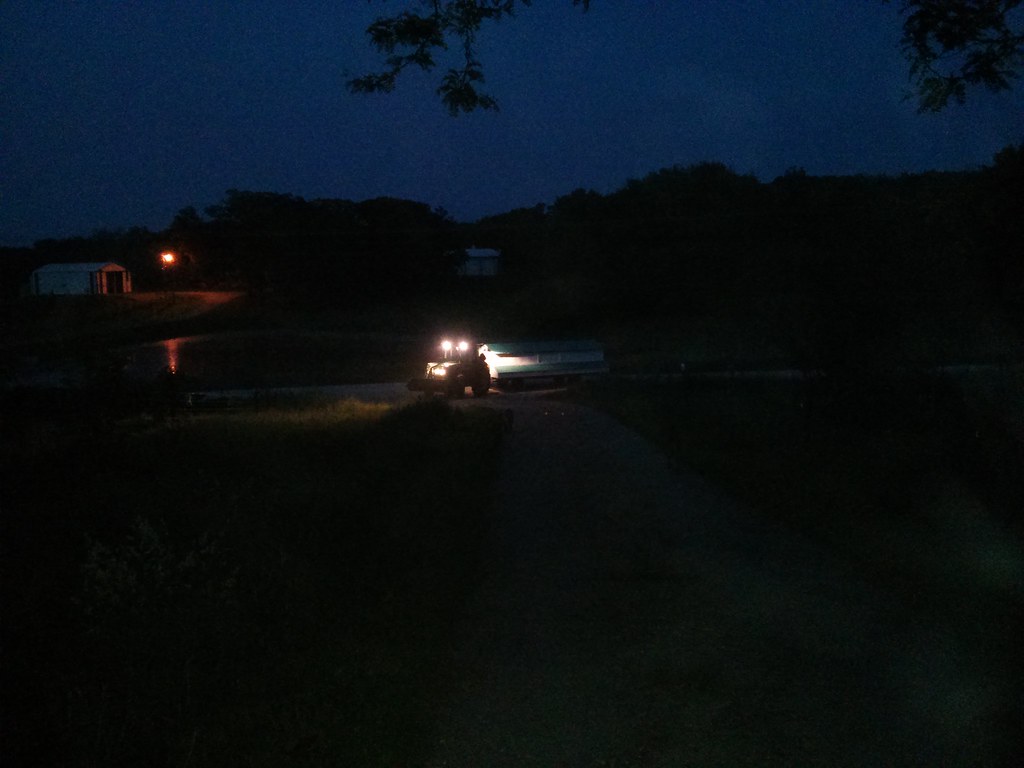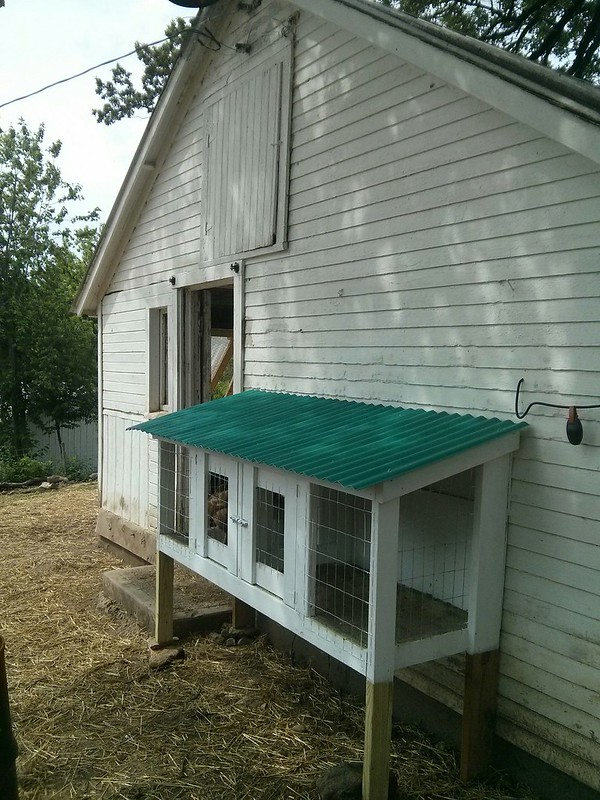Since raising backyard chickens has soared in popularity, there are many blogs about chicken behavior. A lot of that is different when you are raising large numbers of birds and moving them between homes in summer and winter. We are constantly learning how best to deal with our chickens.
Winter is not a fun time for chickens. They don’t really like getting out and about if there is too much snow. Because of this they spend a lot of time with the coop doors open, but very few venture outside. This can cause some stir crazy chickens. When chickens get stir crazy, they start pecking on each other. (Think of your kids being cooped up in the house too long.) Pecking can quickly get out of hand. If blood is drawn on a chicken, everyone joins in and can peck a bird to death.
Inside the winter coop.
We have tried many things to keep our chickens entertained in the winter, some kind of silly, but the best seems to be having scratch grains available all the time. Enter; barley. We have been feeding free choice barley for the past year and sprouting it in winter for fodder, and have had very few pecking issues.
When spring arrives and we move chickens from their winter home to the Winnebeggo, they are really befuddled. We prepare to move the chickens in early spring, by parking the Winnebeggo next to the chicken coop the day before, then wait until dark when the girls have roosted for the night. Andrew and I then don headlamps, catch sleeping chickens, and put them in the Winnebeggo. Early the next morning, we move the Winnebeggo and accompanying gear to pasture. We have to make sure to move the Winnebeggo far from the chicken coop, or the chickens will find their way back to the coop and we will spend much of our summer trying to catch chickens in the coop and shuttling them back to the Winnebeggo. It doesn’t matter to the chickens that living conditions are far better on pasture; they are creatures of habit.
Winnebeggo’s maiden voyage.
One of the first issues we encounter when moving to the Winnebeggo, is that the first few days in it, the chickens are clueless about where to roost at night. They figure out the nest boxes fairly quickly, but when night falls we are faced with chickens roosting mostly under the Winnebeggo. We spend several nights crawling under the Winnebeggo, catching chickens and putting them inside. In an earlier post I explained there is usually a manure buildup under the Winnebeggo, therefore, catching these chickens is not a pleasant job. Luckily, after a few nights of doing this they start to figure out we would like them to roost inside.
Chickens roosting under the Winnebeggo.
Egg eating can be another problem. Like us, chickens love the taste of pasture raised eggs. If an egg breaks, which they do sometimes, they will race to eat it. This can develop into a habit of chickens breaking eggs themselves and eating them. We try to control this by keeping next boxes very dark, so they can’t see the eggs. They prefer dark nest boxes to lay in anyway, so this seems to keep egg breakage and eating to a minimum.
Because they are allowed to free range, our chickens like to find other places besides nest boxes to lay their eggs. I spend a great deal of time trying to figure out where they might have lain their eggs and have found clutches of eggs in some unbelievable places. These eggs can’t be used for human consumption, so when this happens, our dogs usually get a treat. We had a chicken hatch 8 chicks last summer because she hid her nest too well in an abandoned pig waterer.
Broodiness, or a hen trying to hatch a clutch of eggs, is a problem we deal with regularly in spring and summer. When a hen “goes broody” she doesn’t lay eggs, neglects her own health, and takes up space in the nest box. Some breeds are more prone to broodiness, so we take that into consideration when choosing a breed. We have tried many methods to try to break a hen’s broodiness, but what seems to work best is Chicken Prison.
Chicken prison is built with a small mesh wire floor to allow for maximum air circulation. When chickens are broody, their chest/breast area is very warm to the touch due to hormonal changes that prepare them to incubate their eggs. The theory is that if you can cool them down and not allow a comfy dark space to nest, they will get over being broody. Usually a week in chicken prison will do the trick. We also use chicken prison for injured birds.
Someone on this farm is a comedian.
Last in the Series: Part 4: Predator Problems and Solutions







Shouldn’t it be “Henitentiary”?
Once again, enjoyed the article and as usual I learned some new things…..very interesting
We have 3 backyard hens, Buff Orpingtons. And one who regularly gets broody usually starting in May and then every 3-4 weeks. I’ve tried all kinds of things as well, and found if I catch her JUST as she starts to do that telltale rhythmic “cluck cluck cluck” I will put her in our chicken prison (a small chicken tractor inside their coop with its own sleeping area and feeding area raised up with only wire beneath her) she will come out within a day or so. The longer you wait, the longer it takes!
This last time was right before my daughter’s wedding last week. I heard that cluck cluck and I picked her right up, looked her straight in the eye and said “not THIS week lady.. NOT this week.” I put her in for the day and by the next day she was cluck and broody free and never missed a beat in laying eggs! I think that look and stern admonishment scared the broody right out of her! LOL!
Hopefully that will be the last for this season!